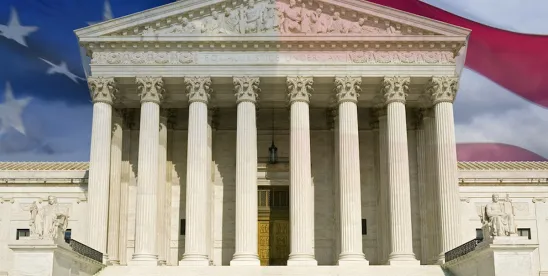On June 28, 2024, the Supreme Court issued its eagerly anticipated rulings in Loper Bright Enterprises v. Raimondo and Relentless, Inc. v. Department of Commerce and explicitly overruled the doctrine of “Chevron deference,” creating the opportunity for a new wave of challenges to federal administrative activity.
Chevron deference emerged in the Supreme Court’s 1984 opinion in Chevron v. NRDC, which established a deferential framework for the adjudication of administrative actions, regulations, and interpretations. Under Chevron deference, if a court determined that Congress had not spoken to the issue or if the statute at issue were ambiguous, then the court would be required to defer to an agency’s reasonable interpretation.
The application of Chevron deference resulted in a greater likelihood of success for federal agencies when their actions were challenged in court. One study found that administrative agencies prevailed nearly 25% more often when Chevron deference was applied, and the SEC has prevailed in roughly 81% of its cases at the district and circuit court levels when Chevron deference was used.
With Chevron overruled, the effects of the Supreme Court’s ruling will be seismic. Interpretive authority will shift away from federal agencies and invite challenges to actions of practically every federal agency, including the EPA, SEC, FTC, and Department of Labor.
In Loper Bright and Relentless, commercial fishing companies challenged an agency rule requiring vessels to bear the cost of onboard federal observers to monitor potential overfishing despite the underlying legislation, the Magnuson-Stevenson act, being silent with respect to any obligation to pay. After losing in the trial court and D.C. Circuit, the petitioners found a receptive audience in the Supreme Court.
The majority opinion, authored by Chief Justice Roberts, ruled that Chevron deference was “unworkable” because the “concept of ambiguity has always evaded meaningful definition” and “because agencies have no special competence in resolving statutory ambiguities. Courts do.” The Chief Justice cautioned that “by overruling Chevron, though, the Court does not call into question prior cases that relied on the Chevron framework.” Those prior holdings, including the upholding of the Clean Air Act in Chevron itself, “are still subject to statutory stare decisis despite the Court’s change in interpretative methodology.” But, as the dissent points out, many agency interpretations, which have not previously been challenged because of the presumption of Chevron deference, are now at risk of being challenged. The dissent also warns that the prior holdings that the majority claims are still binding precedent may not be so safe because “courts motivated to overrule an old Chevron-based decision can always come up with something to label a ‘special justification’ … or … ‘unworkable.’” If a court wants to overrule precedent, writes Justice Kagan, “all a court need do is look to today’s opinion to see how it’s done.”
While the Supreme Court had expressed skepticism of Chevron in recent decades, it had refrained, until now, from the impulse to overturn the doctrine. Having finally taken the plunge, the Court’s ruling will invite a wave of federal challenges to the administrative state. The upshot of the Court’s opinion in Loper Bright and Relentless will be an increase in litigation challenging agency actions, particularly those concerning complex regulatory schemes where Congress has punted the details to agencies believed to have the expertise to fill in the gaps left by legislation.
The Federal Government and supporting amici warned that overruling Chevron would have “radical consequences,” including shifting power from agencies to private businesses with the means to challenge regulations, potentially resulting in the erosion of environmental, consumer finance, and other protections implemented by agency experts for the public good. Similarly, proponents of Chevron have argued that its overruling would result in inconsistent interpretations at the District and Circuit Court levels, because judges would be able to impose their own individual policy preferences without the shackles of deference to agencies on the meaning of a disputed or ambiguous statute, potentially resulting in even more confusion and litigation.
The overruling of Chevron may be seen as part of a trend of Supreme Court cases limiting the power of other branches of government, in this case the executive branch, and positioning the judiciary in a more prominent role. Judges often claim to be agnostic on matters of public policy. Chief Justice Roberts famously said, “my job is to call balls and strikes, not pitch or bat.” But public policy disputes are increasingly being decided by courts. Today’s ruling will only increase the frequency and importance of regulatory and constitutional litigation.





 />i
/>i

